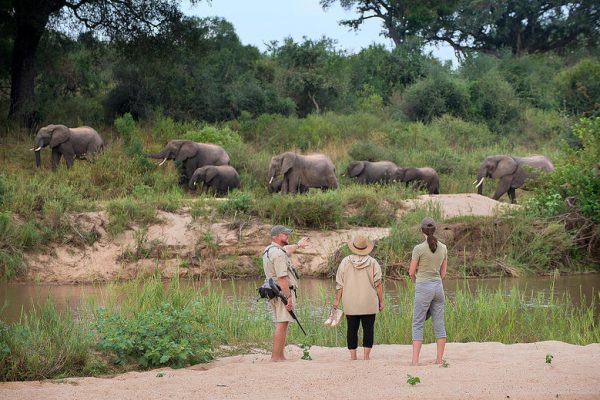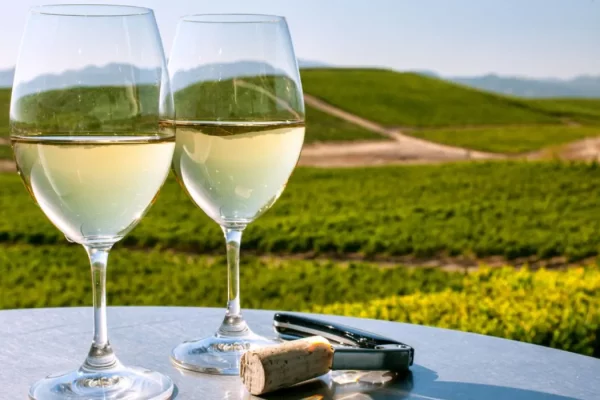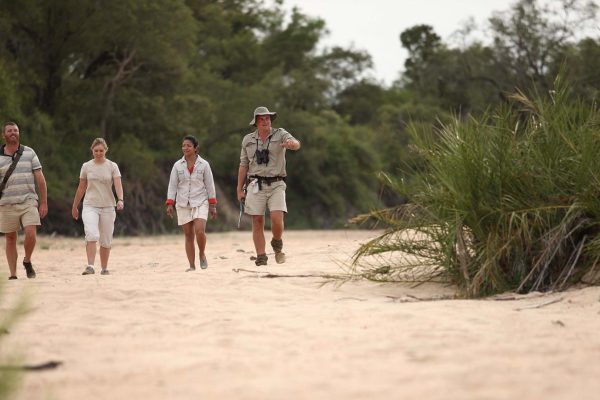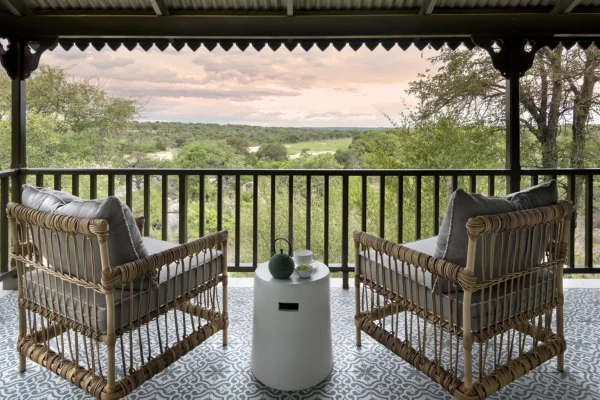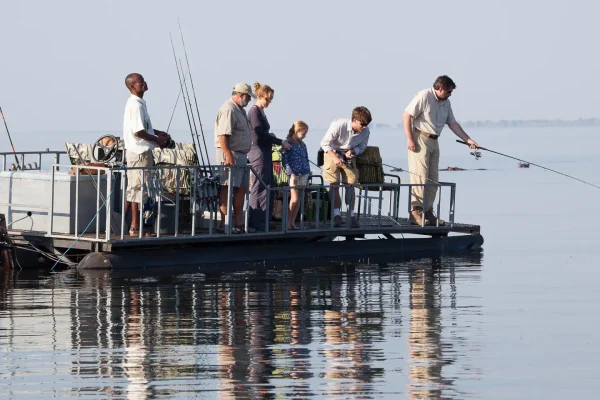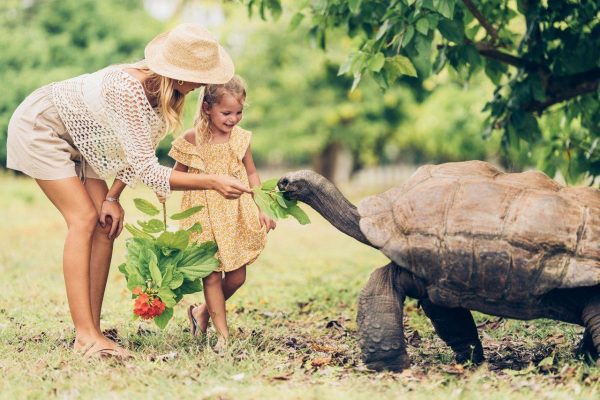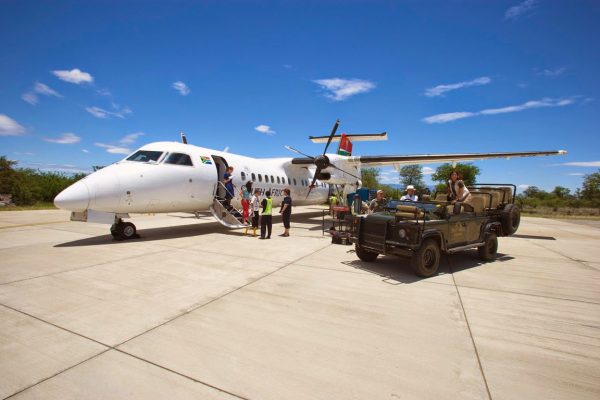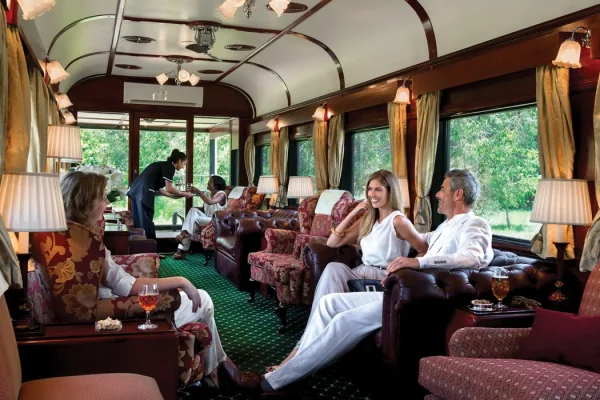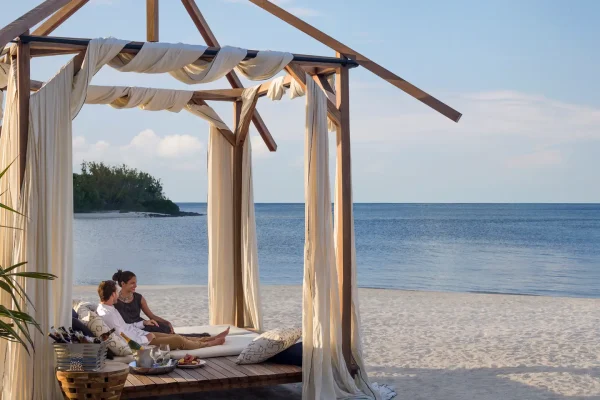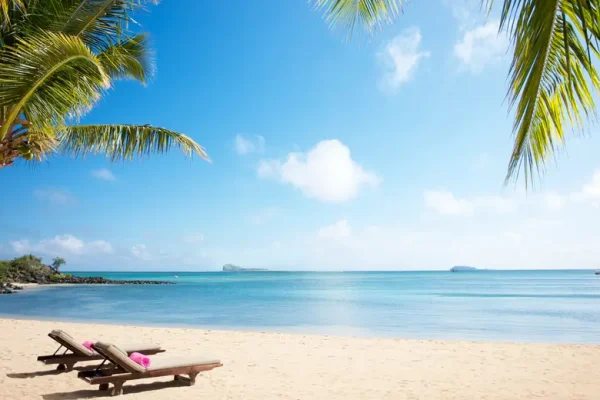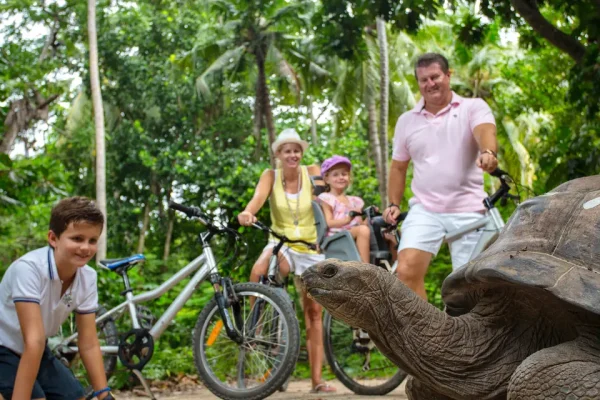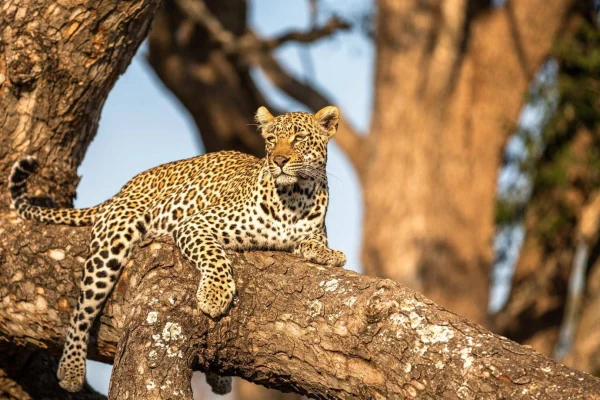Kruger Safaris: Luxury Kruger National Park Safari Packages
Safaris in Kruger National Park offer diverse experiences, from classic guided drives and luxurious lodge stays to self-drive and walking safaris. Visitors can choose full-day tours for a taste of the park or multi-day packages, with options tailored for families, adventure, or luxury. Activities often include guided 4×4 game drives with expert trackers searching for the “Big 5,” walking safaris, and self-catering tented camps for independent travelers.
As the crown jewel of South Africa’s national parks, Kruger offers visitors the chance to go on a safari unlike any other. Located along the border with Mozambique, this game reserve is the biggest in South Africa and is larger than Israel. It spans 352 kilometers (20,000 square kilometers) from north to south and has over 2 million hectares of land. According to many, it will provide you with an unforgettable encounter with nature. Among the greatest in Africa, without a doubt. Safaris in the Greater Kruger Park provide an unparalleled opportunity to encounter magnificent wildlife through a diverse array of high-end game lodges, safaris, activities, and tours.
Luxury Kruger National Park Safari Packages
One of the best things about Kruger National Park is how easy it is to get to, in addition to the stunning landscapes and incredible animals. Kruger offers great Big 5 game watching and opulent lodging without being too remote, and it’s only a few hours’ drive from Johannesburg. The town also has its own international airport, so visitors can easily connect to Cape Town and the Indian Ocean coast of Mozambique.
Furthermore, a Kruger safari might take several forms. Indulge in a lavish honeymoon safari in Kruger Park’s renowned private reserves, or get your heart racing on a guided walking safari as you follow the tracks of large animals on foot.
For those with limited time, we provide fly-in safaris; for those who like to travel independently, we have economical self-drive vacations; and for families, we have Kruger Park safaris that include activities designed specifically for children.
Why not add a city break in Cape Town, a tropical getaway in Mozambique, or an exciting day at Victoria Falls to your Kruger safari? Get in touch with one of our African Safari Experts if you can’t find the Kruger holiday combination that suits your interests, budget, and requirements in our catalogue.
Luxury Kruger Park Safaris And Tours
Masai Mara vs Serengeti vs Kruger
Masai Mara is best for Great Migration river crossings and cultural visits, Serengeti is ideal for the epic Great Migration circuit and remote wilderness, and Kruger is best for Big Five spotting, diverse ecosystems, and self-drive options. Masai Mara and Serengeti share an ecosystem but are in different countries (Kenya and Tanzania), while Kruger is in South Africa.
Cape Town, Winelands And Kruger
A trip combining Cape Town, the Cape Winelands, and Kruger National Park** is a popular South African itinerary that offers a mix of city sights, wine tasting, and wildlife safaris. Popular activities include exploring Cape Town’s Table Mountain and Robben Island, touring vineyards in areas like Stellenbosch and Franschhoek, and going on a “Big 5” safari in Kruger.
Kruger Walking Safari
A Kruger walking safari typically combines guided walking safaris with traditional game drives in Greater Kruger National Park’s private reserves, often including unique experiences like sleeping out under the stars. You can also find 9-day itineraries that extend beyond Kruger to nearby destinations like Victoria Falls or Chobe National Park,
Kruger And Mozambique Islands
Kruger and Mozambique Islands refer to a popular travel combination that pairs a Kruger National Park safari with a beach holiday on the Mozambique coast, often called a “bush and beach” trip. This itinerary combines wildlife viewing, such as spotting the “Big Five,” in Kruger with relaxing on Mozambique’s white-sand beaches and enjoying ocean activities like snorkeling and diving.
Kruger, Zimbabwe And Mozambique
A Kruger, Zimbabwe, and Mozambique itinerary typically involves a combination of wildlife safaris and beach relaxation, often starting at Victoria Falls or Johannesburg and moving through Zimbabwe’s national parks like Hwange and Matobo, before heading into Mozambique for coastal activities in Vilanculos or Tofo. The trip concludes with time in South Africa’s Kruger National Park and then departs from Johannesburg or Pretoria.
Cape Town, Kruger And Seychelles
A trip combining Cape Town, Kruger National Park, and the Seychelles offers a diverse African experience, blending city culture, world-class wildlife safaris, and a tropical beach finale. This popular itinerary typically involves starting in Cape Town for city attractions, flying to Kruger for a safari to see the Big 5, and then flying to the Seychelles for relaxation and island activities.
Kruger Fly-in Safari
A Kruger fly-in safari is a convenient way to visit Kruger National Park, where you fly directly from a major airport like Johannesburg to a private airstrip near a luxury lodge in the Greater Kruger area. This method saves travel time, allowing you to spend more time on game drives, and provides exclusive access to a private game reserve.
Cape Town to Kruger Rovos Rail Journey
A Rovos Rail journey from Cape Town to Kruger involves traveling on a luxury train to Pretoria, followed by a safari in the Kruger National Park. The full experience typically starts with pre-train activities in Cape Town, like exploring the city and winelands, before boarding the train for the scenic journey through regions like the Karoo and Kimberley.
Kruger Safari And Mauritius
A “Kruger Safari And Mauritius” trip combines a safari adventure in South Africa’s Kruger National Park with a relaxing beach vacation on the island of Mauritius. The typical itinerary involves flying from Kruger to Mauritius after the safari portion, with activities including wildlife viewing on safari and beach/water activities in Mauritius.
Cape Town, Kruger & Mauritius
Cape Town, Kruger, and Mauritius is a popular multi-destination trip combining a city and cultural experience in Cape Town, a safari in Kruger National Park, and a beach getaway in Mauritius. The typical itinerary involves exploring Cape Town’s landmarks like Table Mountain and the Cape Peninsula, going on game drives to see the “Big Five” in Kruger, and then flying to Mauritius for relaxation on white-sand beaches and water activities.
Victoria Falls, Kruger And Seychelles
Cape Town, Kruger, and Mauritius is a popular multi-destination trip combining a city and cultural experience in Cape Town, a safari in Kruger National Park, and a beach getaway in Mauritius. The typical itinerary involves exploring Cape Town’s landmarks like Table Mountain and the Cape Peninsula, going on game drives to see the “Big Five” in Kruger, and then flying to Mauritius for relaxation on white-sand beaches and water activities.
Kruger And Seychelles
Kruger and Seychelles is a popular travel combination that pairs a luxury safari in South Africa’s Kruger National Park region with a relaxing beach getaway on the islands of the Seychelles. This itinerary allows travelers to experience both wildlife viewing, particularly the “Big 5,” in a private game reserve adjacent to Kruger, followed by island activities like snorkeling, hiking, and relaxing on white-sand beaches.
Why Kruger National Park is Worth Visiting
Safaris in Kruger National Park are the best. Kruger National Park is home to more species than any other South African park, and its award-winning lodging, well-oiled logistics, and team of top-notch trackers and guides are all set to whisk you away on exhilarating walking safaris and Big 5 game drives.
1. Among the World’s Very Best Big 5 Sightings
Pick a Kruger safari if you want to cross sighting leopard, lion, elephant, rhino, and buffalo off your list of must-see wildlife. Seeing all five in a single day is quite common. Kruger is one of the oldest African conservation zones, and as a result, visitors can expect to see a wide variety of animals, including cheetahs, wild dogs, and a plethora of birds.
- Up-close, reliable Big 5 sightings all year round
- Tracker-and-guide teams work together to find sightings
- No crowds at sightings (private reserves only)
- Few fences so wildlife can roam freely
2. A Safari for Every Traveller
The top-notch infrastructure, reliable transportation options, knowledgeable guides, and outstanding service in Kruger make it a perfect destination. Kruger has a wide variety of accommodations to suit every requirement, including those with private plunge pools, Wi-Fi, air conditioning, and exclusive-use vehicles. Kruger National Park’s lodges provide a plethora of activities for vacationers who like to get their blood pumping, including archery, wine tasting, star gazing, tennis, yoga, cooking classes, and photography classes.
- Experience the Big 5 on a Kruger National Park family safari
- Ideal for first-time travellers
- Well-suited for wheelchair-friendly safaris
- Fall in love with Kruger on a honeymoon safari
- Build memories on a Kruger luxury safari
- Well-catered for kosher and halal-friendly safaris
2. A Safari for Every Traveller
The top-notch infrastructure, reliable transportation options, knowledgeable guides, and outstanding service in Kruger make it a perfect destination. Kruger has a wide variety of accommodations to suit every requirement, including those with private plunge pools, Wi-Fi, air conditioning, and exclusive-use vehicles. Kruger National Park’s lodges provide a plethora of activities for vacationers who like to get their blood pumping, including archery, wine tasting, star gazing, tennis, yoga, cooking classes, and photography classes.
- Experience the Big 5 on a Kruger National Park family safari
- Ideal for first-time travellers
- Well-suited for wheelchair-friendly safaris
- Fall in love with Kruger on a honeymoon safari
- Build memories on a Kruger luxury safari
- Well-catered for kosher and halal-friendly safaris
4. Kruger Is Perfect for Walking and Guided Safaris
In specialised 4×4 vehicles, knowledgeable guides and trackers look for the Big 5 on the Kruger’s first-rate classic safaris. For the most daring travellers, Kruger National Park’s Rhino Post, Klaserie’s Africa on Foot, and Timbavati’s Ngala Safari Lodge all provide walking safaris, where guests may forego game drives and instead explore the park’s complex ecosystem at their own pace with a knowledgeable guide.
- Classic 4×4 safaris with tracker-and-guide teams.
- Adventurous walking safaris allow you to discover the smaller fauna and flora.
- Walk with an armed ranger through big game territory.
- Birders will enjoy ticking off almost 520 recorded species on game drives or walks.
5. Private Reserves = Fewer Crowds
Our first pick for a Kruger safari would be one of the private reserves—the Sabi Sands, Thornybush, or Singita’s concessions—because of the extreme seclusion, little crowds, and breathtaking wildlife viewing opportunities. Famous for their almost guaranteed sightings of the Big 5, these exclusive-use conservation areas are at the forefront of luxury safaris.
Other benefits and highlights of private reserve:
- Private off-road guided game drives
- Vehicle limit at wildlife sightings
- Luxurious lodges: star beds, spas, Wi-Fi and private pools
- Best safari food in Africa (award-winning chefs)
- High concentration of leopards
- Area known for seeing all the Big 5 in a single day
6. Convenient Travel Logistics & Easily Combined with Other Destinations
There are few African wildlife places as accessible as the Greater Kruger. To get to Kruger National Park from Johannesburg’s OR Tambo International Airport, you can take a short-haul aircraft to one of three airports outside of the city, or you can hire a comfortable vehicle. Once you’re there, you can take a vehicle that also serves as a game drive between the lodges. There is less time spent travelling and more time on safari thanks to the small size of the private reserves and the quick transfer periods. Because there are so many flights, you may easily combine a Kruger safari with a trip to another location.
- Easily combined with island holidays: Mozambique and Mauritius
- Easily accessible to: Cape Town and Victoria Falls
- OR Tambo to Kruger about 450 kilometres / 280 miles by road (we will arrange a qualified driver-guide)
Best Places to Visit in Kruger National Park
The Kruger National Park, which covers two provinces in South Africa, is a real behemoth among Africa’s parks and reserves, measuring just under 20,000 km²—roughly the size of Israel or Wales. Safari goers contemplating a stop in Kruger should be well-versed in the park’s physical composition, as it is only one of four parts that comprise Greater Kruger National Park.
1. Panorama Route: stunning scenery & self-drive safaris
Located to the west of Kruger National Park, the Panorama Route is an incredibly picturesque area. It is a rocky, rough terrain with deep gorges and stunning views, yet it is well-served by tiny, welcoming towns and easy highways. Blyde River Canyon and Bourke’s Luck Potholes, God’s Window, Pilgrim’s Rest, a traditional town, and many more attractions can be found along the Panorama Route.
On the Panorama Route, you’ll find a wide variety of accommodations, from family-friendly lodges and safari lodges to world-class spas and lavish retreats, making it the perfect place to unwind after a day of early starts in the Kruger. In addition to the safari, the Panorama Route is well-known for its abundance of adventure and sports activities, such as golf, cultural tours, horseback riding, and quad biking, to name a few.
2. Kruger National Park: South Africa’s flagship reserve
Kruger National Park is the biggest, most diverse, and oldest conservation area in South Africa. It is open to the public and is managed by the government parastatal SANParks.
Located in the southern and central regions, where game viewing is traditionally better, the Kruger National Park is fully fenced, has an extensive network of tarred and gravel roads, and is home to a wide range of accommodation and visitor facilities. The park spans both Limpopo and Mpumalanga Provinces.
3. Kruger’s Private Reserves: Africa’s best Big 5 game viewing
Privately owned and managed game reserves, often in big blocks before being split into smaller ones, stretch along most of the western border of the Kruger.
These eco-reserves, which are no longer isolated from the park, are home to some of the most prestigious safari brands in the world, including Sabi Sabi, Thornybush, Londolozi, and Mala Mala, and they provide what is often believed to be the pinnacle of African safaris.
Not only is the lodging, administration, and guiding out of this world, but sightings of the Big Five are practically assured. Since off-road driving, guided nature walks, and night drives are all legal, you’ll have plenty of chances to see animals—which are already quite accustomed to humans and can be seen more frequently and up close than in the park.
4. Kruger’s Private Concessions: luxury & exclusivity within the park
Kruger Park’s private concessions are exclusive-use sections within the park, running parallel to the private reserves. The concessions offer first-rate lodging and guides, and game viewing is often breathtaking. Visitors can enjoy activities like night drives, bush walks, and off-road driving to get up close and personal with the animals.
While staying in a private concession is comparable to a private reserve in terms of luxury safari amenities, guests who like to explore the park’s interior on game drives will appreciate this perk.
The Best Time to Visit Kruger National Park
During the dry season, which lasts from May to October, visitors to Kruger National Park are treated to the finest conditions for game viewing and walking safaris. In addition to the perennial water sources that provide an enjoyable safari experience in the Kruger, the sparse and low vegetation during this time of year makes animals easy to identify and track.
While most people visit the Kruger at any time of year, the best time to go really depends on your intended activities while there. In the Kruger, you’ll experience two separate seasons: the dry winter (May–October) and the wet summer (November–April). Having said that, a safari in Kruger National Park is never boring.
Rainy Season (October to March)
Summers in the subtropics are hot and rainy, beginning in October and lasting until about March. The parched park becomes a verdant floral haven after the summer rains, but the more vegetation makes it more difficult to spot wildlife.
Dry Season (April to September)
Warm, dry days and chilly nights characterize the winter months of April through September. Because there is less foliage and more water available in rivers and water holes in the winter, game viewing is traditionally better during this season. Travelers venturing out on night rides should dress warmly.
Fauna and Flora in Kruger National Park
Kruger National Park is renowned for its abundant fauna and flora, including the “Big Five” (lion, leopard, elephant, buffalo, and rhinoceros) and a vast diversity of plant life, from mopane forests to fever tree woodlands. The park is home to 336 tree species and a wide array of mammals, birds, reptiles, amphibians, and fish.
Kruger National Park is home to a vast array of animals, including the Big Five: lion, leopard, elephant, buffalo, and rhino. Other common sightings include giraffes, hippos, zebras, wildebeest, and various antelope like the impala and kudu. The park also hosts predators such as spotted hyenas, cheetahs, and wild dogs, along with numerous smaller mammals and a diverse bird population.
Cultural Heritage in Kruger National Park
While big game viewings and vast stretches of wilderness bring most visitors to Kruger National Park, the park’s rich cultural and historical landscape is just as impressive. Archaeologists have found more than 255 artifacts dating back over a million years, from early Stone Age (approximately 1 million years ago) settlements to numerous Iron Age sites and more modern historical structures and sites.
The spiritual and cultural significance of several of these locations is well-documented, and others provide light on the region’s fascinating and romantic past.
The historical, spiritual, and cultural significance of these places makes their preservation all the more critical. Protecting these locations is our legal obligation as national stewards of the environment.
Sites that are currently open to the public are: Albasini Ruins, Masorini Ruins, Thulamela
Activities in Kruger National Park
In Kruger National Park, you can go on game drives (morning, afternoon, and night) to see the Big Five and other wildlife, or take guided walking safaris for a more up-close experience with smaller details. Other activities include birding, mountain biking, eco-trails, and cultural or historical visits to places like the Thulamela Ruins or Letaba Elephant Hall.
No need for visitors to stress over what to do with their spare time at Kruger National Park; the park provides a thrilling array of activities, all with the goal of bringing guests closer to nature and creating a home away from home. Participants on ecotrail, backpacking, or day walks can relax knowing that seasoned, licensed, and armed guides will lead the way and provide insightful commentary on the breathtaking scenery at predetermined intervals. The participants will have the opportunity to get up close and personal with nature, allowing them to truly appreciate its marvels.
Getting to Kruger National Park
Many tourists who come to Kruger National Park choose to drive themselves. However, many visitors, especially those from other countries, opted to fly to the park’s outskirts and then rent a car.
You may reach Kruger National Park in a number of different ways. It is common practice to start and finish journeys in Johannesburg or Cape Town. You can avoid spending the night in Johannesburg by taking a direct flight to your safari lodge or one of the nearby airports; this is the most convenient choice, though.
There are daily flights from Johannesburg to a number of the private lodges in the Kruger National Park area. Going to the park in this manner is the most hassle-free and practical option. The flight will take approximately 90 minutes and drop you off at the closest airport to the lodge you’re visiting. You will be escorted to your resort in a game drive vehicle by a lodge representative or ranger who will be waiting for you at the airstrip.
Kruger Concessions
Kruger concessions are private, licensed areas within or bordering Kruger National Park that offer exclusive, luxury safari lodge experiences to paying guests. These concessions provide benefits like off-road driving, night safaris, and bush walks, which are restricted in the main public park, and offer a more private and less crowded safari experience with the same abundant wildlife. Examples include Jock Safari Lodge, Singita Sweni, and Lukimbi Safari Lodge.
Game Drives in Kruger National Park
Game drives in Kruger National Park are a popular way to see wildlife, with options for both self-driving in your own vehicle and taking guided tours. Guided drives are offered in the early morning and late afternoon/evening, which are the best times for animal activity. You can choose half-day or full-day guided experiences or take advantage of night drives to spot nocturnal creatures.
Kruger National Park Lodges
Guests staying at these Kruger Park safari lodges can enjoy a more exclusive and opulent safari experience because they are situated in private concessions that are not open to the public.
As an outstanding alternative to the more popular parts of Kruger National Park, the private concessions offer a unique experience. These lodges maintain an extraordinary level of luxury and provide bespoke private safari experiences that are unmatched. They are leased to Siyabona Africa’s private concession partners.
These private safari lodges in Kruger Park are perfect for couples, families, and groups of all sizes looking for an unforgettable safari experience in a part of the park that is off-limits to the general public.

